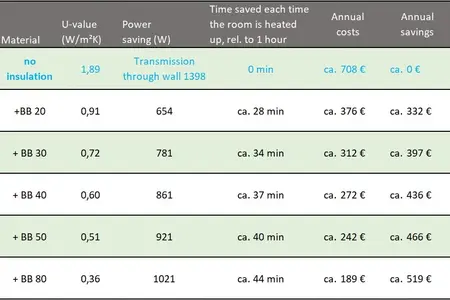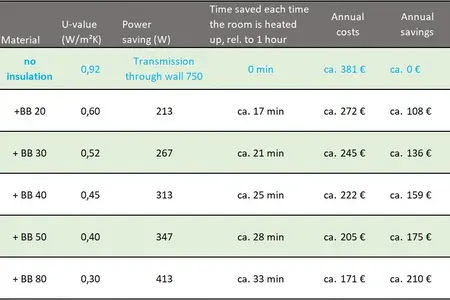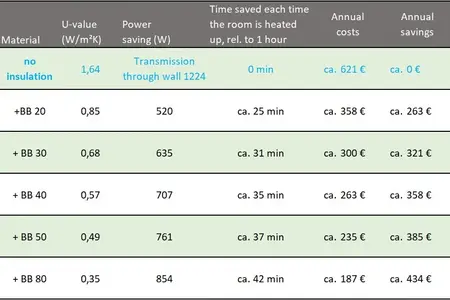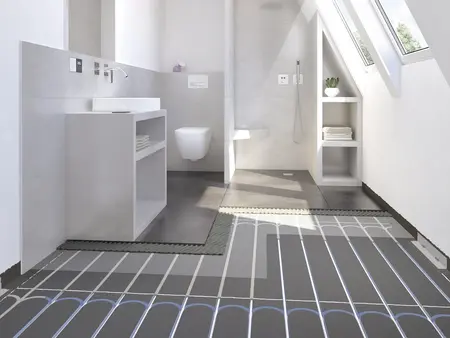Savings
How much energy can actually be saved depends on the nature of the exterior walls. wedi has carried out scientific calculations on the basis of a sample bathroom (9.3 square meters of floor space with 2 exterior walls). Taking the U-value and identical boundary parameters into account, heat transmission can be directly related to differently structured masonry.
In the following example calculations, average energy costs of 0.15 €/kWh were calculated (as of September 2023).

- Plaster 2 cm
- Sand-lime stone 24 cm
- Thick-bed mortar 2 cm
- Tile 1 cm

- Plaster 2 cm
- Pumice stone 24 cm
- Thick-bed mortar 2 cm
- Tile 1 cm

- Clinker stone 11,5 cm
- Lime sandstone 17,5 cm
- Thick-bed mortar 2 cm
- Tile 1 cm

Example calculation sand-lime brick with plaster
Due to the poor insulation properties of sand-lime brick, valuable energy is literally thrown out to the wall. An insulation with just a 20 mm thick wedi building board reduces heating costs by almost half. In our sample bathroom with a floor area of 9.3 sqm, this means 332 Euros.

Example calculation pumice old building with plaster
Exterior walls made of pumice stone are often found, especially in old buildings. The air pores enclosed in the building material act as natural thermal insulation. However, what was considered a contemporary heat storage system at the time can be significantly optimized in terms of building physics using today's means. The calculation table shows that with wedi building boards, energy costs are reduced by up to 55%.

Example calculation clinker old building with air layer
Many veneered old buildings facing have an air layer between the outer wall and the clinker. This layer of air decouples the masonry from the direct influence of the weather and is intended to have an insulating effect at the same time. However, the air layer does not store the energy sufficiently. In our example, installing the wedi building board as internal insulation saves up to 70% energy cost.
